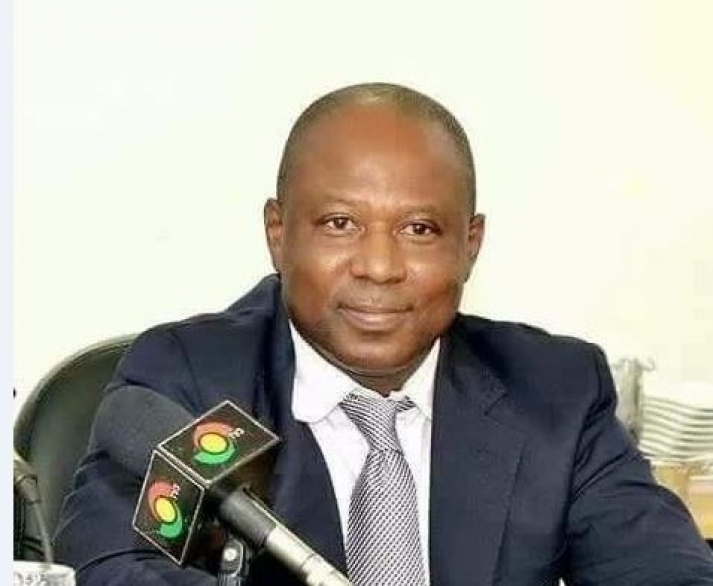
The Bank of Ghana has maintained the policy rate at 26 per cent. The central bank took the decision at its 70th regular MPC meetings.
The Committee said since its last meeting, there have been two readings of inflation. Headline inflation rose to 19.2 per cent in March, from 18.5 per cent in February.
“The sharp increase in March was largely influenced by the lagged effect of the upward adjustment in transport costs. In April, however, inflation declined to 18.7 per cent following a slowdown in non-food inflation,” the Committee said.
It said the monthly inflation rates also slowed, supported by stability in the exchange rate.
Similarly, core inflation (CPI inflation excluding energy and utility prices) picked up in March largely due to the higher transport costs, but has since returned to a declining path. In addition, the latest surveys of businesses, consumers and the financial sector conducted in April reflect declining trends in inflation expectations based on positive perceptions about exchange rate movements and improved energy supply.
It said recent developments in prices remain in line with “our earlier forecasts that inflation will peak in the first-quarter of 2016 and decline thereafter, supported by continued policy tightness and stability in the local currency.”
The MPC said the latest forecast reinforces the earlier forecasts that inflation will gradually decline from the second-quarter towards the target band by mid-2017, barring any unanticipated shocks.
“In the near-term, the tight policy stance and stability on the foreign exchange market alongside easing inflation expectations, and generally improving fundamentals should provide additional momentum to the disinflation process over the forecast horizon.
“The MPC, therefore, views the current monetary policy stance as appropriate, since inflation levels remain above the medium-term target band of 8±2 per cent.”
The Governor of the Bank of Ghana, Dr Abdul-Nashiru Issahaku, however, said there are “risks in the inflation outlook.” “These include unanticipated upward adjustments in utilities and petroleum product prices and possible second round effects from such adjustments on prices. The slow but persistent pickup in food inflation, since August 2014, is also a source of concern for inflation.”
Dr Issahaku said the updated Composite Index of Economic Activity (CIEA) indicated a pick-up in economic activity in the first-quarter of 2016, although at a slower pace than a year ago. “Indicators that accounted for the growth in the index were industrial consumption of electricity, port activities, cement sales and domestic VAT collections. In addition, the recent confidence surveys for both businesses and consumers reflect positive sentiments supported by relative stability in the cedi and significant improvement in electricity supply.”
“The growth outlook is broadly positive contingent on sustained improvements in the energy supply, continued stability in the local currency and additional oil and gas production. However, risks such as tight credit conditions and continued tightness in the fiscal stance may moderate the pace of economic activity.
“Government’s fiscal operations from 2015 through to the first-quarter of 2016 showed faster pace of consolidation with outcomes better than projected. The fiscal deficit outturn for 2015 was provisionally estimated at 6.7 per cent of GDP, lower than the target of 7.3 per cent of GDP. For the first-quarter of 2016, the deficit, on cash basis, was provisionally estimated at 0.4 per cent of GDP lower than the target of 1.5 per cent of GDP.
The MPC said developments in emerging market economies, especially China and Brazil, continue to dampen global growth prospects. In particular, it noted, the slowdown in the Chinese economy has adversely impacted global trade, investments and capital flows.
Given these prevailing conditions, the global growth outlook remains subdued amid tightening financing conditions, especially in commodity exporting countries including Ghana, Dr Issahaku added. These global developments continued to shape the country’s external sector performance, he said.
In the first-quarter of 2016, the Bank of Ghana said the trade deficit widened on account of lower export receipts, especially for oil and cocoa as both price and production volumes declined. “However, the overall effect on the current account balance was moderated by lower outflows from the services and income account coupled with improved inward private transfers.”
The provisional outturn of the current account deficit for the first-quarter was 1.2 per cent of GDP, compared with 1.9 per cent in the same period of 2015. The recent stability in the local currency has continued on the back of tight policy stance and improved inflows, the MPC noted, adding that as of 12 May 2016, the cedi had depreciated by 0.3 per cent against the US dollar compared with a depreciation of 17.2 per cent in the same period of 2015.
The Committee said in the outlook, “the tight policy stance is needed to deepen the gains made on the foreign exchange market and strengthen the disinflation process over the forecast horizon.”
In assessing the current economic conditions, the Committee said it views the risks to inflation and growth as balanced and, therefore, decided to maintain the monetary policy rate at 26 per cent.
The Committee said it remains committed to its price stability mandate and will continue to monitor developments in the economy and take further policy actions, if necessary. The next MPC meeting is scheduled for Friday July 15, 2016. The meeting will conclude on Monday July 18, 2016 with an announcement of the policy decision.
Classfm




























